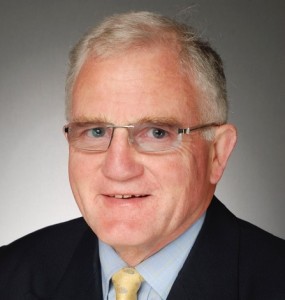The Mr Bearbull Column in Investors Chronicle (4th– 10th October 2019) entitled “Practice makes Perfect”, refers to a report. It was prepared by the management consultant McKinsey on the effectiveness of acquisitions.
He writes:
“McKinsey uses findings from data for the developed world’s 1,000 biggest quoted companies by market value to show that, in the overlapping periods 1999 to 2010 and then 2007 to 2017, those that made lots of small acquisitions – “placing multiple bets and being nimble with capital” – produced better shareholder returns than both the average and those that pursued other growth strategies. The worst-performing group in 2007-17 were those companies that did just a few big deals, yet even those companies that relied on ‘organic’ growth – ie, capital spending on their own operations – did worse than the ‘little-but-often’ group.
“Two further findings stood out. First, excess shareholder returns rose in line with the number of bolt-on deals. So, those companies that averaged two to five deals a year between 2007 and 2017 generated annual returns of 0.5 per cent above the average. Those that made over five deals averaged 0.7 per cent in excess returns.
“Linked to that, these ‘programmatic acquirers’ were much more likely than average to be among those who remained in the elite 1,000 between 2007 and 2017. Of the 178 companies relegated from the Global 1,000 over that period, just 8 per cent were programmatic acquirers. Similarly, these acquirers were over-represented among both the 250 and 100 biggest companies at the end of 2007 that remained in those sections at the end of 2017. They accounted for 48 per cent of the 157 survivors from the top 250 and 60 per cent of the 65 survivors from the top 100.”
So why is this the case?
According to McKinsey serial acquirers make better acquisitions than rival companies because they have a tried and tested blueprint.
As the famous golfer, Gary Player, is quoted as saying:
“The harder you work, the luckier you get.”
and
“You must work very hard to become a natural golfer.”
Consequently, the blue print adopted by these acquiring companies will cover all aspects of the process of acquisitions. From their business plan, finding targets, doing due diligence and integrating new businesses into their “family”.
As a result it becomes a more natural process since the acquirers are in a position to gain a better understanding of the forces shaping their markets.
- How their sectors are likely to evolve.
- What competitive advantages they have.
- What capabilities they are seeking.
- Whether companies’ offerings are overpriced.
Likewise in their book “Why Deals Fail and How to Rescue Them”, the authors have studied M&A lessons for business success. Based upon research, they have come to the conclusion there has been three overarching issues.
- Failure of planning.
- Breakdown of communication.
- Failure to properly consider the impact of people.
Consequently, they believe these are the three big mistakes of deal making.
Case Study
For example I was recently acting for a vendor. When drafting the heads of agreement, we were discussing with the buyer the process by which the two businesses would be integrated. It soon became apparent to me that the buyer did not fully appreciate the vendor’s business model.Likewise how it was structured. Above all there was little appreciation of the culture and the manner in which customers were treated.
As a result, I encouraged the two parties to go away and plan in more detail how the integration would work. In other words part of the consideration was to be deferred and I wanted to ensure my client was protected as much as possible. Both the actions required to make it work and the timetable were incorporated into the heads of agreement.
Where does it start?
Effective acquisitions begin with knowing where you are going and how to get there.
The acquisition cycle as it is called begins with defining the strategy by understanding how their sector will evolve and then continues with the various stages.
Mr Bearbull concludes by writing:
“The moral is that, at the very least, the built-in investment bias against serial acquirers needs to be countered. The assumption that, in the long run, they destroy value might be too lazy. It could be, as McKinsey suggests, that practice makes perfect.”

The information contained in this briefing is based on information available as at the date posted and may be subject to amendment. It is written as a general guide and is not a substitute for professional advice. You are strongly recommended to obtain specific professional advice from us before you take any action. No responsibility for loss occasioned to any person acting or refraining from action as a result of any material in this briefing can be accepted by Assynt Corporate Finance Limited or its employees.

Andrew Watkin
Andrew is the director of Assynt Corporate Finance Limited and an Accredited Member of the Association of Crowdfunding experts.
Previously a partner and head of corporate finance at Baker Watkin LLP, Andrew has more than 40 years of experience in all forms of corporate finance across many business sectors.
Andrew was the Chair of Governors at a local school for six years retiring in December 2020 and continues to be an Assessor of Expeditions for The Duke of Edinburgh's Award.
You can find out more and connect with Andrew over on LinkedIn.
Need Help? Contact Andrew at Assynt:
If you are serious about selling your business, contact Andrew to arrange an informal chat, in person or over the telephone to assess the options open to you.
You can also contact Andrew by email at: awatkin@assyntcf.co.uk or by completing the form on this page.



